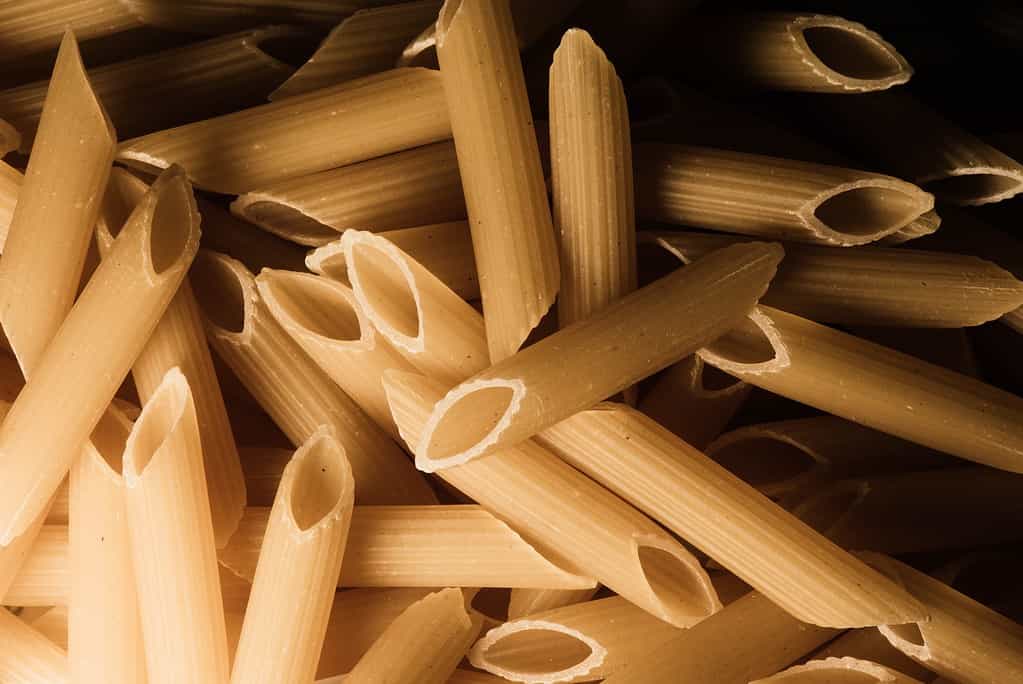What is Productivity: Increasing Quality and Quantity
When it comes to getting stuff done for the day, we talk about how we will be productive. But what is productivity?
We can try to be productive in different contexts: the workplace, our gym workout, or a hobby that we enjoy. It is widely assumed that being more productive is simply about getting more things done per day, but that is wrong.
What is Productivity?
So what does being productive or improving productivity actually mean?
Productivity is a complex idea, and it is difficult to simplify the concept in a few sentences. First, let’s define productivity before we dive more in-depth on the topic:
Productivity is defined as:
- The state or quality of producing something.
- The effectiveness of productive effort as measured in terms of the rate of output per unit of input.
We can examine whether something or someone is productive by the Quality definition (1) or Quantity definition (2) of the products or services created from the work done. For an individual, the definition of productivity shows the relevant output of that individual in a certain period.
In a business sense, the definition of productivity shows the economic measurement of producing goods or services per to the inputs (time, material, energy, etc.) used for the production. For simplicity, we will examine business productivity by the value you deliver to your customers using the metric of revenue generated from the product or service. The business generates revenue by selling a certain number of goods and services at a price that the customer is willing to pay for each good or service.
Example Scenario: Improving Productivity in Meal Preparation

We can examine being productive in work, hobbies, or on vacation. For this article, we will consider productivity in the context of cooking meals, first for personal reasons, and second for a business context.
Personal: At first, you want to stop eating out to save money for lunches during the workweek. Every Sunday, you decide to prepare five meals for the week or one lunch for each workday. Let’s assume that you make pasta for every meal for the workweek to make meal prepping easy for you.
Business: Suppose your coworkers catch on to your homemade pasta meals. They want to pay you to prepare meals for their lunches during the week. Thus, you need to be more productive to turn your meal prepping hobby into a business in which you sell meal packages for the workweek.
Improving Quality
The first definition shows that being productive is linked to the state or quality of the food produced.
Week One
Personal: The first week that you make food, you are pretty bad at it. You undercook the pasta, use sauce from a jar, and add way too much salt. Additionally, the quality of your five meals varies, as some meals are edible, while others are questionable to eat.
Business: As you have just started, your product is inferior. Your customers would not be willing to pay very much for your mediocre food due to the low quality and varying consistency. Thus, you are only able to charge very little or $4 per meal or a total of $20 in revenue for the week of meals.
Improving Productivity Over Time
Over time, you decide to keep making pasta every week and implement changes based on online research and the lessons learned from the previous week. We assume that your pasta quality increases over time, but it takes you the same amount of time in the kitchen to make five meals.
Some Future Week
Personal: In a few months, you have improved your pasta making ability and recipe such that you can cook the food for the right amount of time, create different sauces from scratch, and adjust the salt to your taste. Your overall food quality has improved significantly over the period, and you are consistent in delivering high-quality food. Thus, you have become more productive over time to create better-tasting meals for every lunch for the week.
Business: As your overall food quality and consistency have improved significantly, more coworkers are interested in your service, and the demand for your food increases. You can charge customers more due to the demand for high-quality food. Thus, you can charge $8 per meal or $40 per workweek, which is two times the original rate of $20 per workweek or a productivity gain of two times.

Increasing Quantity
The second definition shows being productive is related to the rate of pasta produced per unit of time you are spending in the kitchen.
Thus, you are either creating more pasta for the same time spent in the kitchen or if you are making the same amount of pasta in a smaller period of kitchen time.
Week One
Personal: The first week that you make food, it takes you a long time. You spill ingredients, take forever to chop the vegetables, and you waited to boil the water. This effort results in you producing five meals of pasta in two hours spent in the kitchen. The rate of your pasta production is two meals per hour.
Business: Again, you start with a product similar to the quality example. Your customers are willing to pay $4 per meal or a total of $20 in revenue for the week of meals. We can now translate this into a wage per hour spent cooking. Since you charge $4 per meal and you can produce two and a half meals per hour, you are effectively making $10 per hour of work in the kitchen.
Improving Productivity Over Time
Again, you consistently make pasta every week and implement changes based on the productivity lessons learned. In this case, we assume that you get faster at making pasta over time, but the quality of food does not change.
Some Future Week
Personal: In a few months, you can make pasta faster than before such that you can make five meals of pasta in one hour. The rate of your pasta production has now increased to five meals per hour. Thus, your increased rate of production means less time spent in the kitchen to make the same amount of food. In the process, you are more productive in your ability to make more pasta in less time.
Business: Your product has not improved in quality, but just in your ability to make more pasta in less time. More people find out about your business and would like you to make their food for the workweek. As the quality has not changed, your customers are still willing to pay $4 per meal or a total of $20 in revenue for the week of meals. However, as the time spent cooking the food decreases by half, you can produce five meals per hour. Thus, you can make $20 per hour or double the initial rate per hour spent in the kitchen.
Why Quality Matters More than Quantity?

I would argue that to be more productive, improving the quality of your end product is much more important than increasing the quantity of the total amount of end product created. This idea follows the definition of productivity, as the Quality definition (1) supersedes the Quantity definition (2).
It is a common misconception for you to think that you are productive, just by the sheer amount of stuff produced and the time spent on any given project. We can spend a lot of time working on a project, but we can still end up with an undesirable end product.
Thus, the goal is to have an end product of desirable quality and then be able to produce that end product in the least amount of time. Both methods of productivity will help you in creating more value for yourself and your customers, but time can be a limiting factor.
In the example above, I would first focus on getting our pasta to a desired level of quality and improving that quality over time. Then, the secondary focus should then be on scaling up the business and producing more pasta in a lesser and lesser amount of time. If we focus on both aspects of productivity, we can improve the quality of the meals to get customers to pay $8 per meal and increase the quantity produced to five meals per hour. We can now effectively make $40 per hour, which is four times the original rate of $10 per hour or a productivity gain of four times.
Improving Productivity in Your Own Life and Business
How can we become more productive in our own lives and businesses?
Below, we will focus on being productive for a short period of time. I outline five steps to conduct one small project that should take no more than three hours. We will use the meal prep example from earlier as an example.
1. Decide On the Project
The project scope is the actual work that needs to get done. You need to be strategic in deciding on which project needs to get done versus what projects can be deferred to a later time, delegated to another person, or deleted off your workload.
The project scope will be the meal preparation with a resulting end product of 5 meals for the week or one meal for each day.
2. Block Out the Time
Choose a time block in your calendar of no more than 3 hours in the calendar to work on and finish this specific project.
Suppose the meal prepping historically takes about 2 to 3 hours, so I will choose Sunday afternoon from 1 PM to 4 PM to prepare our meals as this fits well into my schedule.
3. Plan the Work
Before getting started, the work should be planned out. Large complex projects can be scary, so you can plan out the big project and break it down into smaller manageable tasks. You can frame your tasks in terms of SMART goals.
To start the meal preparation, I will have the kitchen clean, tools available, and all required ingredients ready. Next, I will have the recipe available from a cookbook, as this breaks down the meal preparation into small manageable tasks.
4. Take Action
Now, take action using the Pomodoro Technique. This time management technique breaks up the project time block into pomodoros or 25-minute work periods separated by five-minute breaks. After about four pomodoros, it is recommended that you take a more extended break of about 15 to 20 minutes. During each 25-minute work block, eliminate all distractions and focus on the tasks needed (no multitasking) to fulfill the project.
I will execute 25-minutes of meal prepping tasks using the recipe. Then, I will take a break, in which I can check my phone, check social media, go to the bathroom, etc. I will then repeat this cycle until I finish the five meals for the week.
5. Review to Improve
After the time block ends or when the project is over, a review should be conducted. This is so you understand how the overall project went and what actions can be take to improve productivity. Before taking on the next project, you can implement what you learned, so you can improve and be more productive in the next project.
After finishing the meals on time, I conducted my review. The meals turned out great, but I feel that I could save time in the future. I found that I hate cutting vegetables, and it takes me 30 minutes to do this task. In this case, it makes sense for me to buy precut vegetables from the store to save 30 minutes. Next time, I will make a note on my grocery list to buy precut vegetables from the store.
Next Steps
I hope you understand productivity a lot better now. If you are looking for a to-do list tool to get organized and be more productive, check out our review of ClickUp or Todoist!







